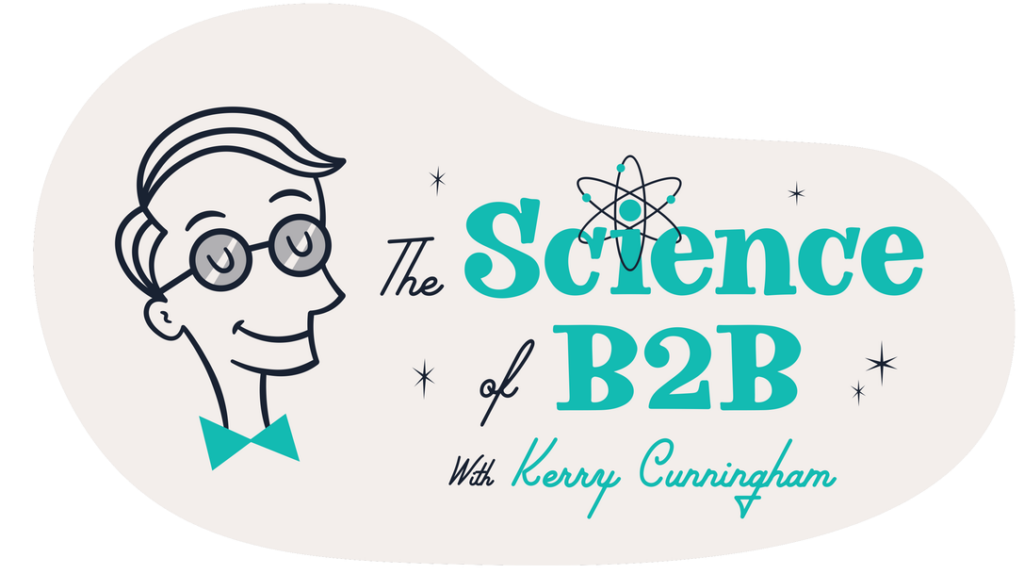The best marketing is rooted in storytelling. Some marketing stories are so good they take on lives of their own. They become widely believed truths.
For instance, the axiom “Breakfast is the most important meal of the day” doesn’t hail from an esteemed group of doctors or nutritionists. It’s a slogan Kellogg’s created in the 19th century to promote its new-fangled product: cereal.
Within our industry, one especially insidious B2B marketing myth has hidden in plain sight for too long. It’s in your SaaS dashboards, in your marketing plans, and on your reports. It’s the mother of all marketing myths, the MQL.
Somehow the story of the Marketing Qualified Lead was passed from marketer to marketer until it became legitimized on an industry-wide scale. But unlike healthier fables — like eating a hearty breakfast — the MQL is a myth we need to forget.
The Mirage of the MQL
At first glance, MQLs are a boon for marketers because they provide a measurable metric for accountability, converting the creative “art” of marketing into a “science.”
But in recent years, especially as the adoption rate of ABX has skyrocketed, the MQL has lost its luster. It’s not the all-powerful metric marketers thought it was.
MQLs were designed to measure a prospect’s level of engagement. But, ironically, marketing driven by MQLs usually does the opposite of engaging your customer. The pressure to stuff the pipeline with leads often spurs a “carpet bombing” approach to marketing. If we bombard buyers with enough cold calls, spam emails, and form-fills, something’s got to stick — right? (Wrong.)
Further, arbitrarily assigning “points” to leads until someone hits a magic MQL figure and is passed on to sales is, by its nature, impersonal. Making a judgment on how ready a prospect is to buy based on form-fills and downloads alone is pure guesswork.
With only 2% to 5% of website visitors completing fill-forms, you’re still missing 95% of the people who make it to your site.
Chasing Leads Blunts Your Content’s Impact
Great content helps customers find your brand. It educates, engages, and builds trust. Prospects are more likely to buy when they receive valuable, targeted, high-quality content.
But you blunt your content’s impact and blur your focus when you use content to solely pick up MQLs.
Rather than considering what will help buyers, you end up creating stuff you think could be okay to gate behind a form-fill. Sure, you might get the odd relevant email address, but at what cost to your brand? A piece of poor or irrelevant content immediately leads to a loss of trust or interest.
And even when the content is up to snuff, in an MQL world, clicking that “download” button often generates an immediate call from a BDR or a spammy email. That’s a dreadful experience. Who can blame folks for using fake contact information when a form-fill quickly leads to being hounded?
It’s this fear that pushes prospects into the safe anonymity of what we call the Dark Funnel™, where buyers avoid vendor sites altogether and conduct anonymous research on websites such as industry publications, blogs, social networks, and product review sites.
Historically, sellers couldn’t de-anonymize those important intent signals … and therefore couldn’t determine the interest level (or buying stage) of specific accounts.
But you don’t need to push your prospects into the Dark Funnel. When you break free from the confines of the MQL, you can use content to enrich your customer journey and create great marketing moments in the process.
B2B Buying Has Moved On
The world — and B2B buying — is moseying on. Savvy B2B marketers are using the latest tech to serve up personalized digital experiences informed by AI and in-depth buyer intent data. Leads are out; targeting relevant accounts (especially those primed to make a buying decision right now) is in.
This approach is far removed from the MQL, gated content, and indiscriminately filling the pipeline. We call it revenue technology, or RevTech.
RevTech combines AI, big data, and machine learning to free you from the legacy systems and strategies that have held back your revenue team. It revolutionizes the way B2B revenue teams go to market, tearing down silos to unify your marketing efforts with sales and customer success.
With shared technology and data-backed insights, you can say goodbye to guesswork, low-quality MQLs, and bland, inaccurate buyer experiences. Here are a few resources that can help you better understand RevTech (and see more reasons why MQLs are losing their luster):
- Making Sense of ABM
- ABM Is Still Just Good Marketing
- 3 Account-Based Measurement Capabilities to Help You Succeed
- Deliver Predictable Revenue Growth
- Business Impact Framework
With revenue technology, your team can identify the right buyers and give them the right information they want when they need it — no matter where they are in the buyer’s journey. You get high-quality pipeline and revenue, and your customers an exceptional buyer experience.
Everyone wins … and we can all finally move on from old marketing myths.
Want practical steps on how you can make the jump from MQLs to revenue-focused marketing? Check out this video.





